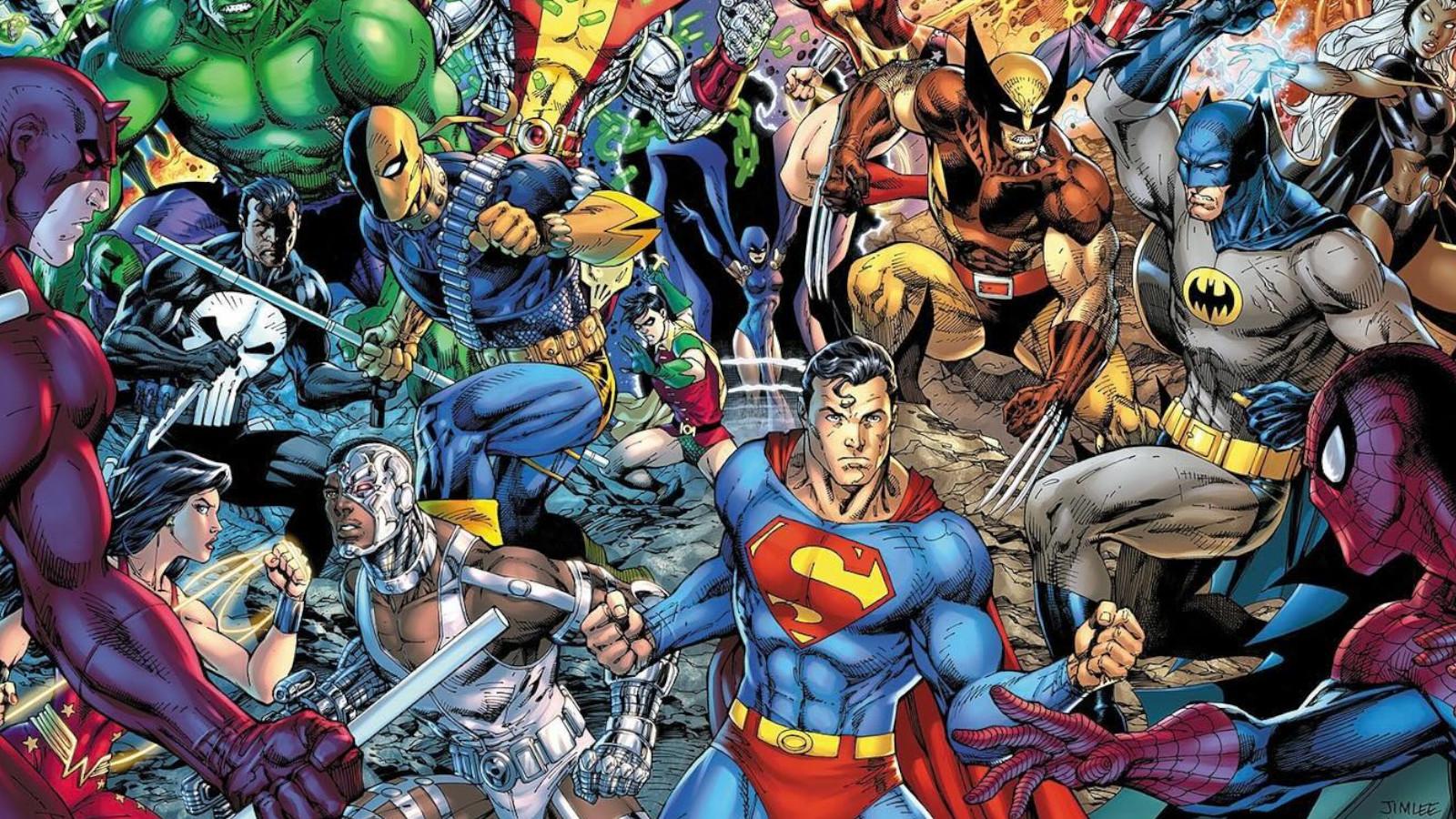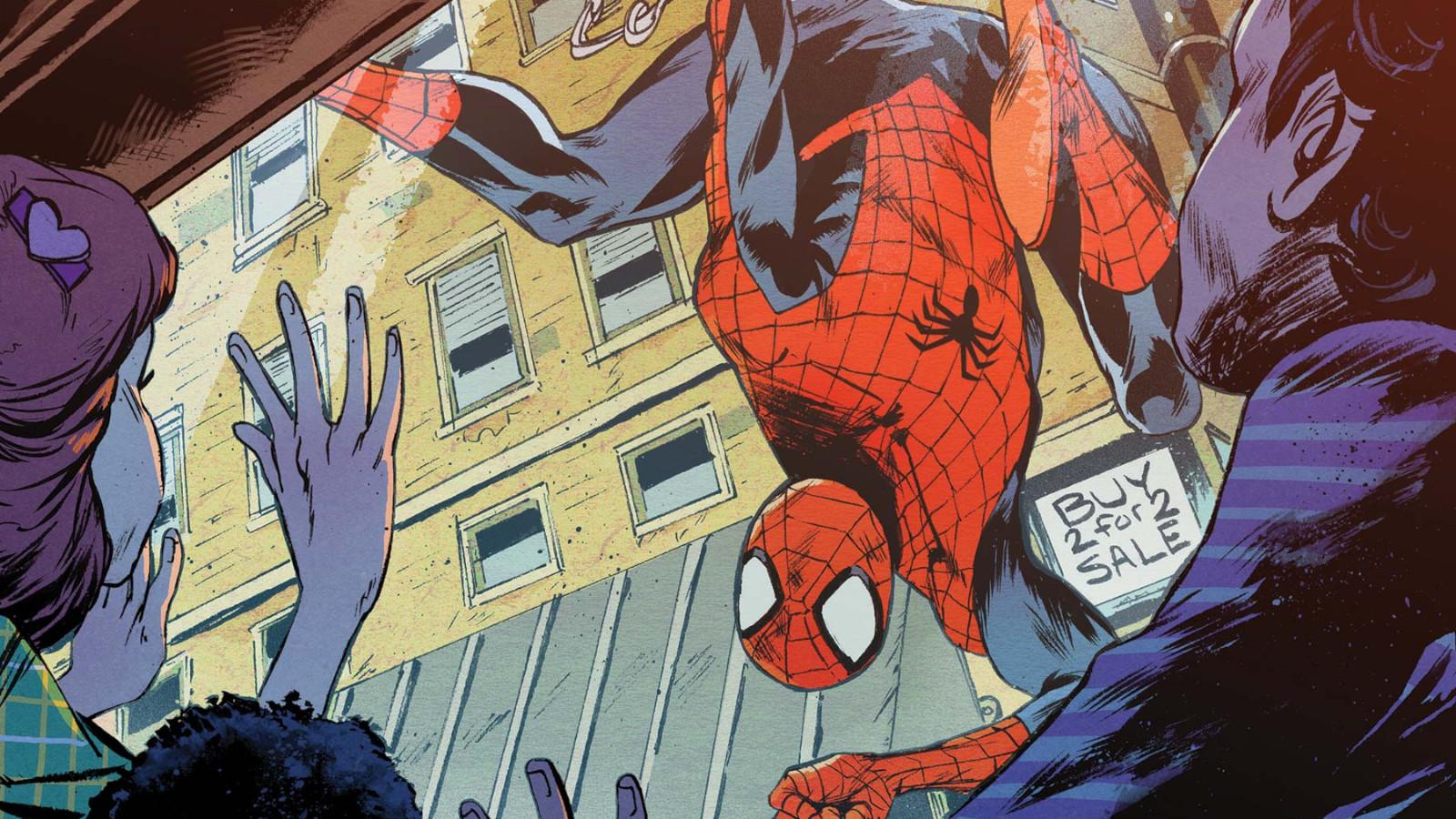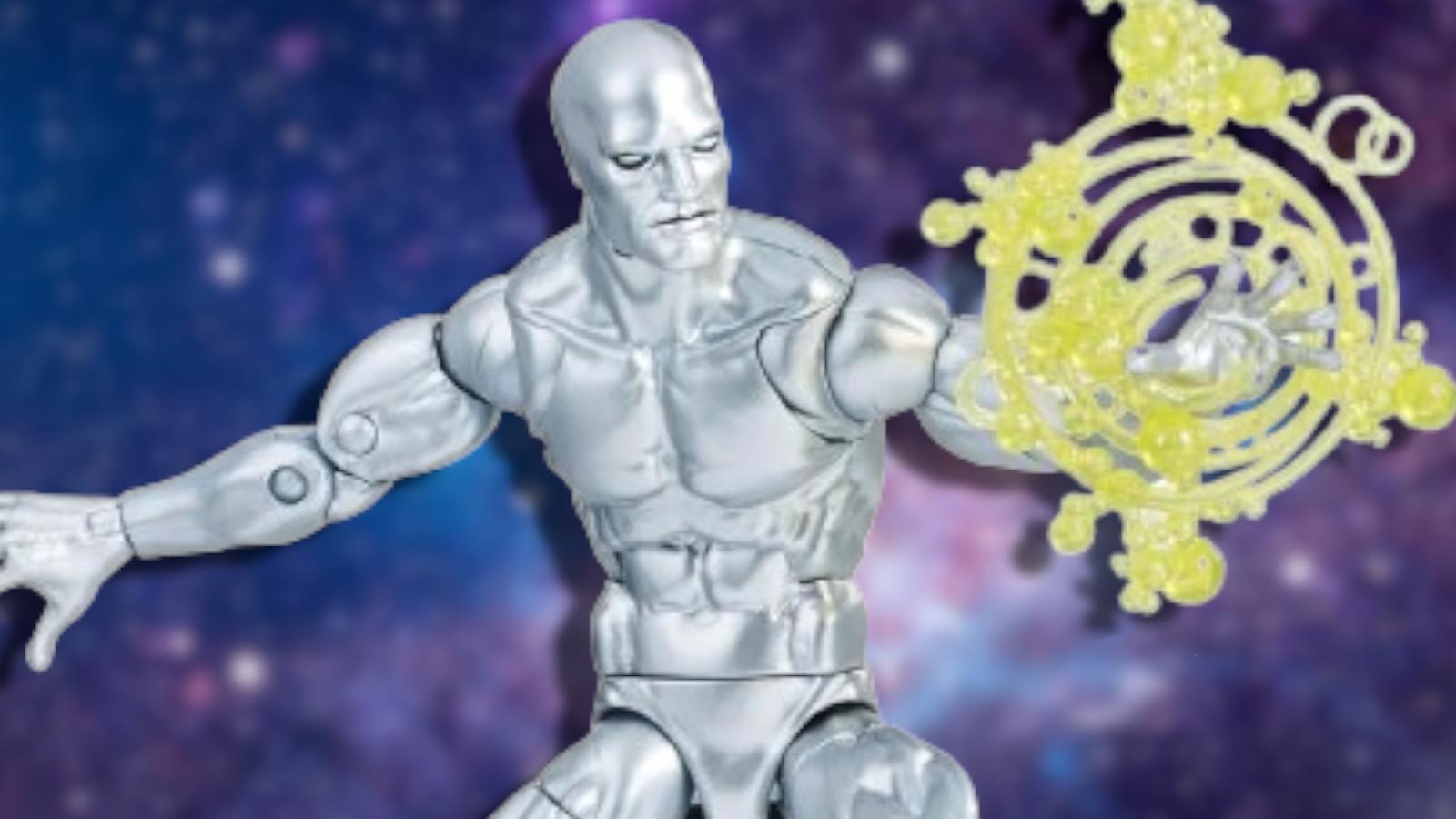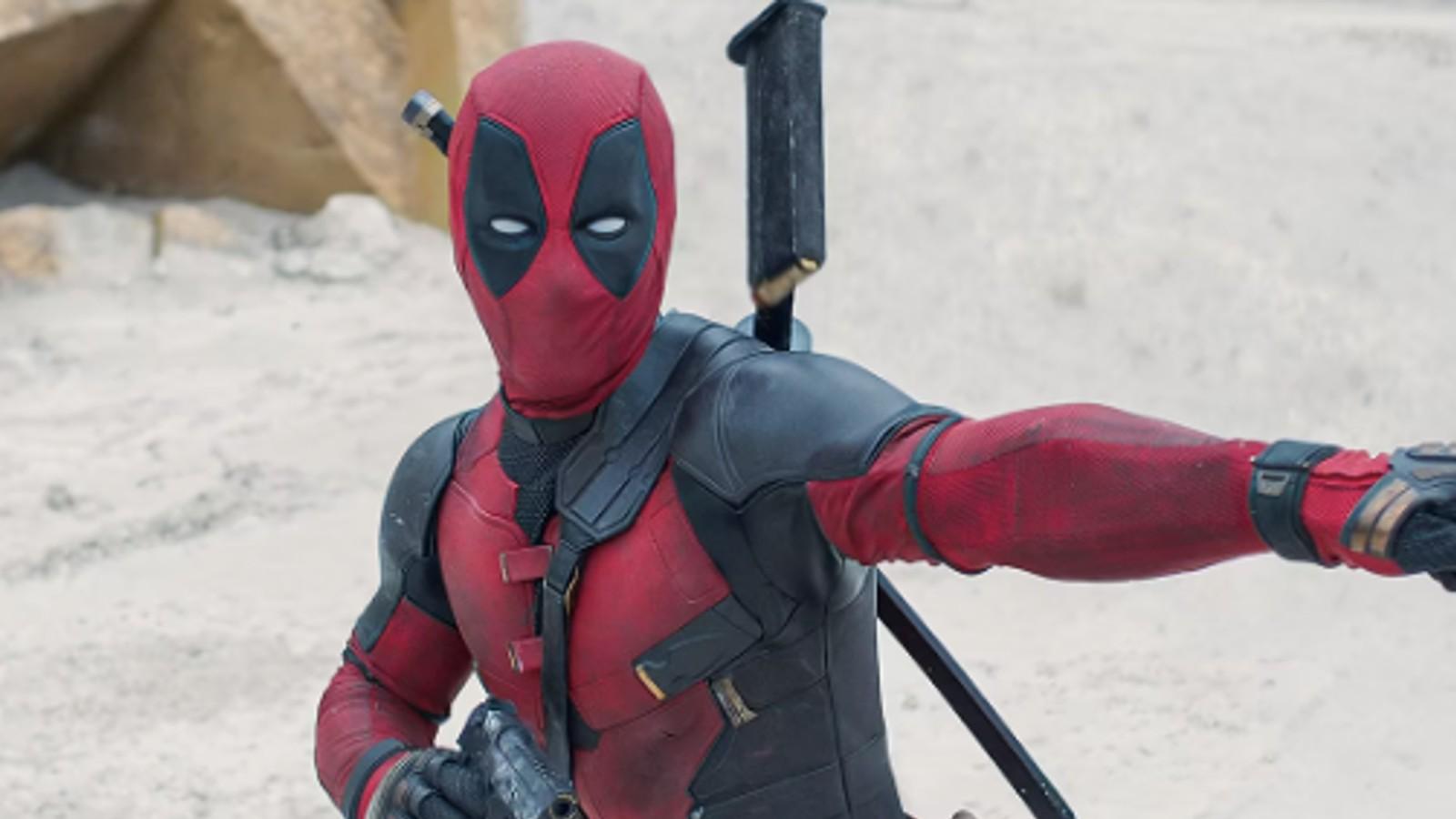The ten best Fantastic Four comics to read before the next movie
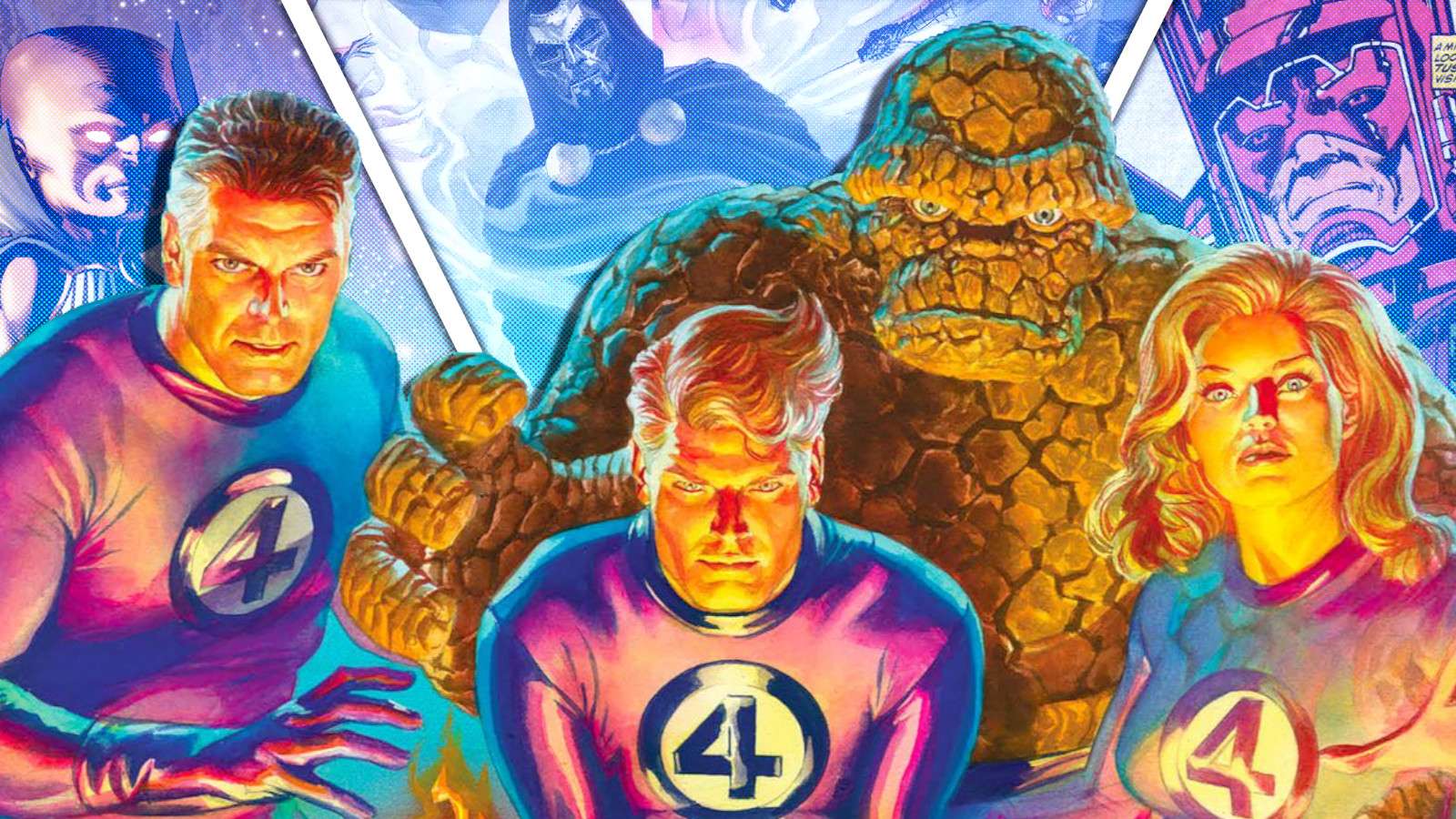 Marvel Comics
Marvel ComicsAhead of the Fantastic Four’s return to the big screen, catch up on Marvel’s first family in their absolute best, must-read comics.
Marvel’s long-gestating Fantastic Four movie is finally getting off the ground. With Pedro Pascal signing on as Reed Richards, alongside Vanessa Kirby, Joseph Quinn, Ebon-Moss Bacharach, and, surprisingly, H.E.R.B.I.E., Marvel’s first family is finally set for the big screen.
It’s a long-awaited announcement for a property Marvel has been trying to make a big deal for decades now. Previous film attempts have been met with a less-than-enthusiastic response, though, with the last effort, 2017’s Fantastic Four, sitting at a soul-crushing 27 on Metacritic.
If you’re looking to learn more about who the Fantastic Four are, reading the comics is obviously the way to go. With that in mind, here are the best Fantastic Four comics to get to know the characters before the MCU’s movie.
The best Fantastic Four comics to read before the MCU movie
Contents:
- The Fantastic
- Fantastic Four: Life Story
- FF
- Solve Everything
- Hereafter
- The Coming of Galactus
- This Man…This Monster!
- Mr. And Mrs. Grimm
- The Trial of Reed Richards
- Whatever Happened to the Fantastic Four?
The Fantastic
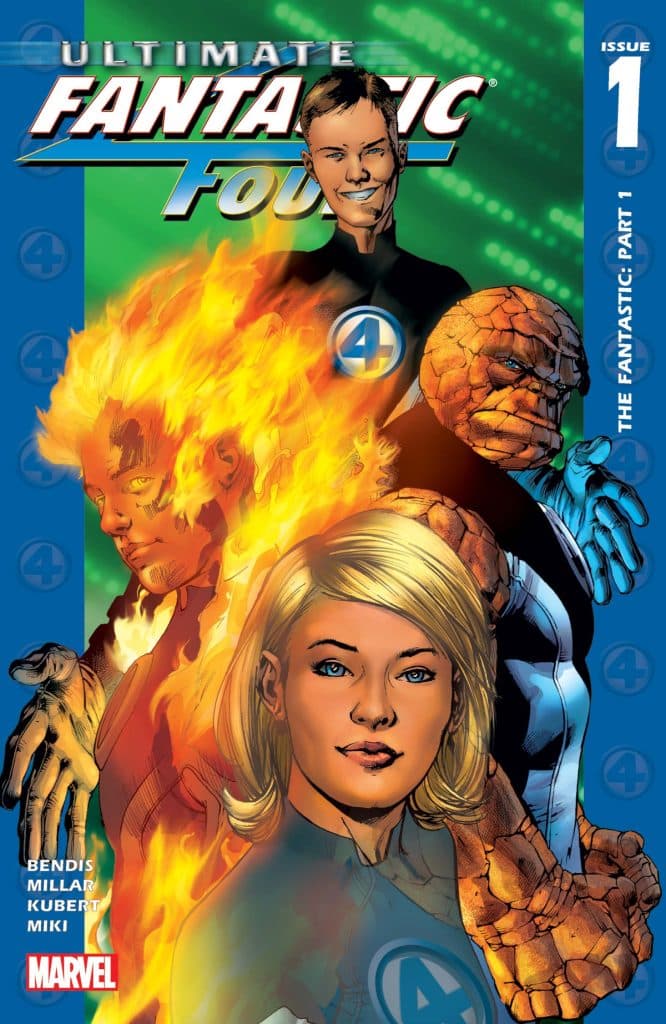 Marvel Comics
Marvel ComicsIt’s a bit of forgotten trivia by this point, but Ultimate Fantastic Four was originally meant to be a prequel to the Ultimate Universe, with older versions appearing in other books. The title exists in a weird limbo, disjointed to most of the Ultimate Universe for its early issues.
Regardless, Ultimate Fantastic Four starts with a hell of a bang. In contrast to the 616 universe origin of the Fantastic Four, Earth-1610’s FF is straight-up body horror. Mr. Fantastic has no internal organs and a literal black hole for a stomach. The Human Torch has to molt periodically. And no one is quite sure how The Thing can even breathe.
If you want your FF weird, Ultimate is the way to go. The series has some pretty staggering lows as it makes its way through some of the Ultimate Universe’s most controversial stories, but this is also where some of Marvel’s biggest and best modern ideas – such as Marvel Zombies and Reed turning into the evil Maker – get their start.
Fantastic Four: Life Story
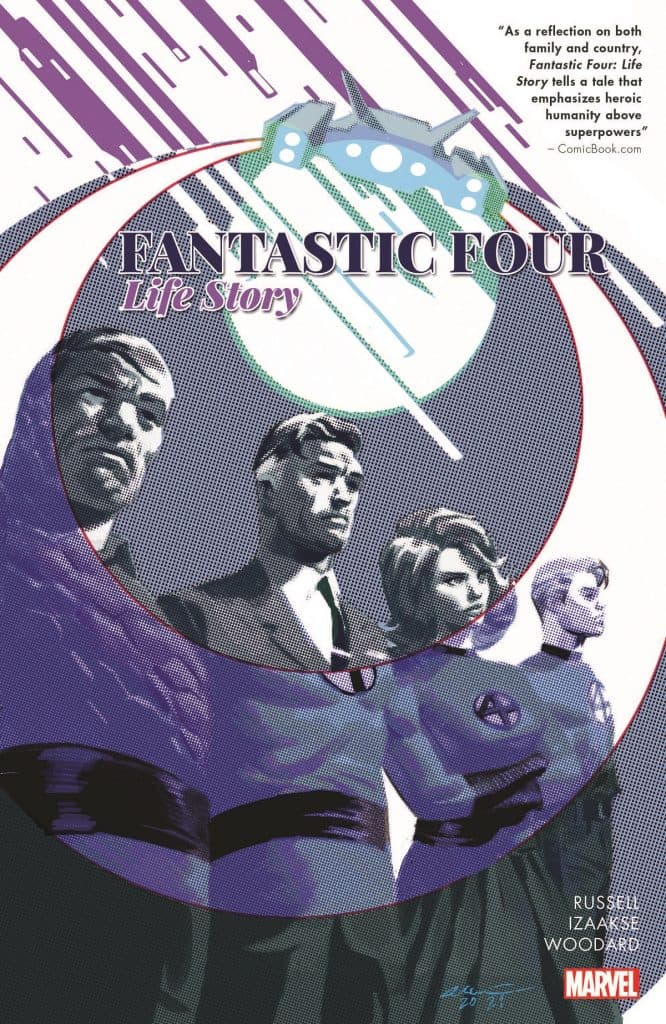 Marvel Comics
Marvel ComicsMarvel’s ongoing Life Story series of stories has proven to be a fun experience for readers. The stories pick up in alternate 1960s, then follow the characters to the modern day, with everyone aging in real-time.
This makes Fantastic Four: Life Story one of the more intriguing prospects, as we get to see how the heroes experience their most triumphant and dour moments, all as age naturally.
The story has some genuinely heartfelt moments to it, from Reed using his powers to hide his old age to his and Sue’s separation and eventual reconnection. Life Story is an exciting read for dedicated Fantastic Four fans but maybe keep some tissues nearby.
FF
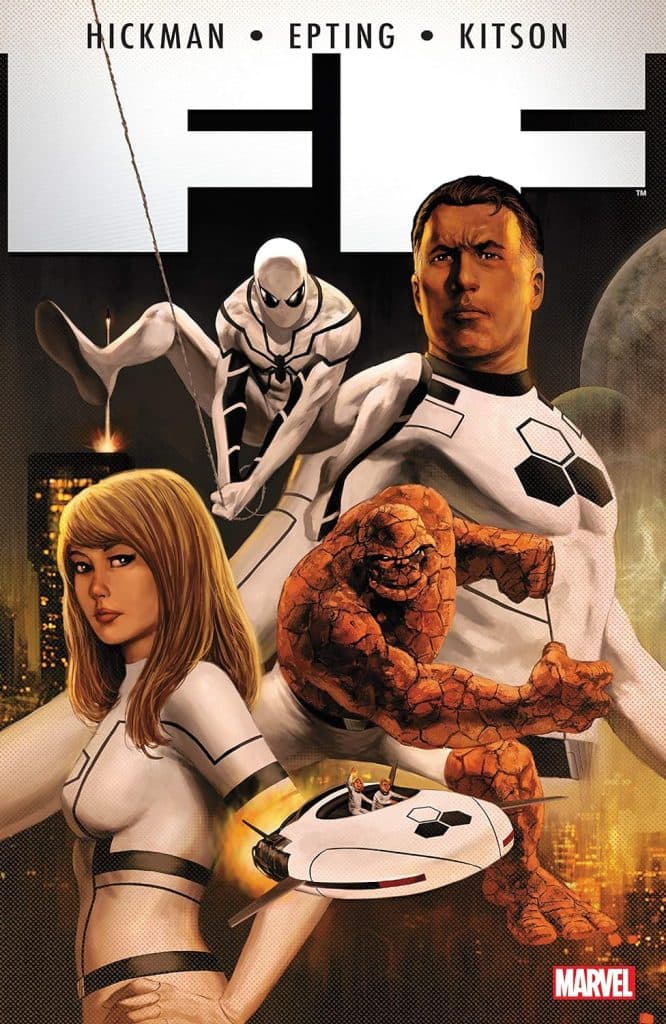 Marvel Comics
Marvel ComicsThe Fantastic Four are no longer a quartet. Johnny Storm has sacrificed himself to prevent a Negative Zone invasion (it turns out he’s alive and mostly well, having been healed in the Negative Zone, but that reveal is still more than a year away), but the world moves on.
To preserve their legacy and honor The Human Torch‘s sacrifice, the Fantastic Four as we know it disbands. Instead, the FF become representatives of Reed Richard’s Future Foundation, a think tank and academy for the brightest children in the galaxy.
Adding longtime Fantastic Four ally Spider-Man to round out the team and replacing the traditional blue suits with new white uniforms (that are still, for my money, the best the team has ever looked), FF is cutting-edge science fiction comics at their best, with a heartfelt message about family, loss, and grieving at its core.
Solve Everything
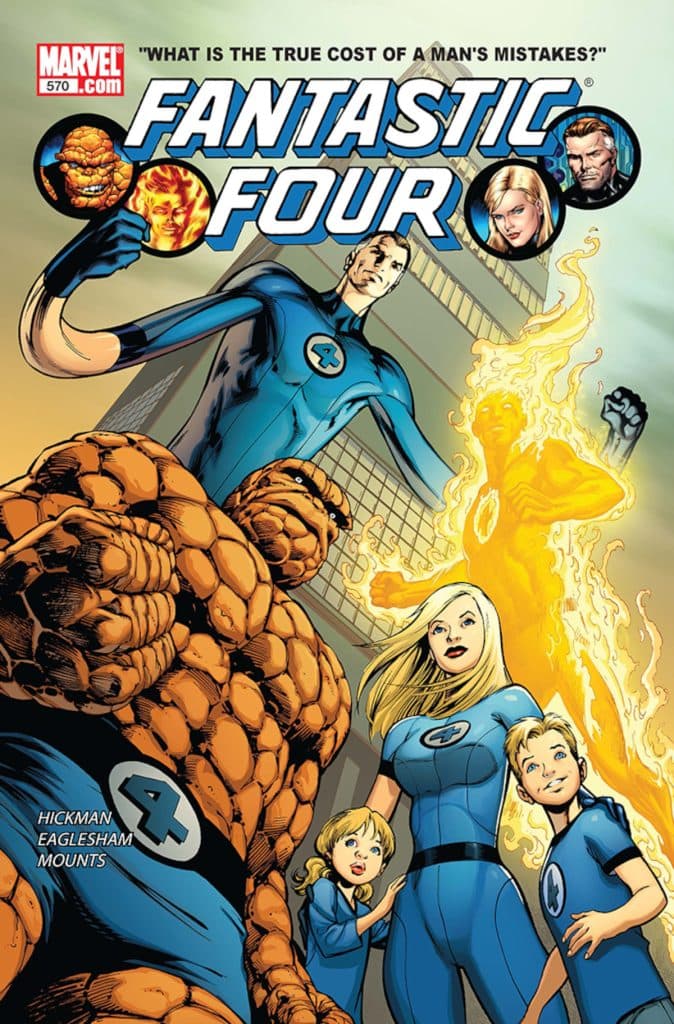 Marvel Comics
Marvel ComicsLong before Jonathan Hickman was breaking minds with the X-Men, he was redefining the Fantastic Four. Coming off a popular run by Kick-Ass creator Mark Millar, Hickman immediately marked his territory by getting nuts. The result is one of the most critically acclaimed Fantastic Four runs ever.
It starts with Solve Everything, in which Reed Richards finally hits his breaking point. He’s got 100 ideas to make the world a better place, and now he’s enacting idea #101: solve them all. To do so, he crosses the barrier of time and space to meet his own array of variants, the Council of Reeds.
It’s a haunting parallel, considering Kang and his Council of Kangs are a potential descendent of Reed’s line. And seeing Reed, a good man constantly beset by his best intentions, facing multiple versions of himself with equally good intentions and multiple Infinity Gauntlets is enough to let you know how bold Hickman’s FF would get.
Hereafter
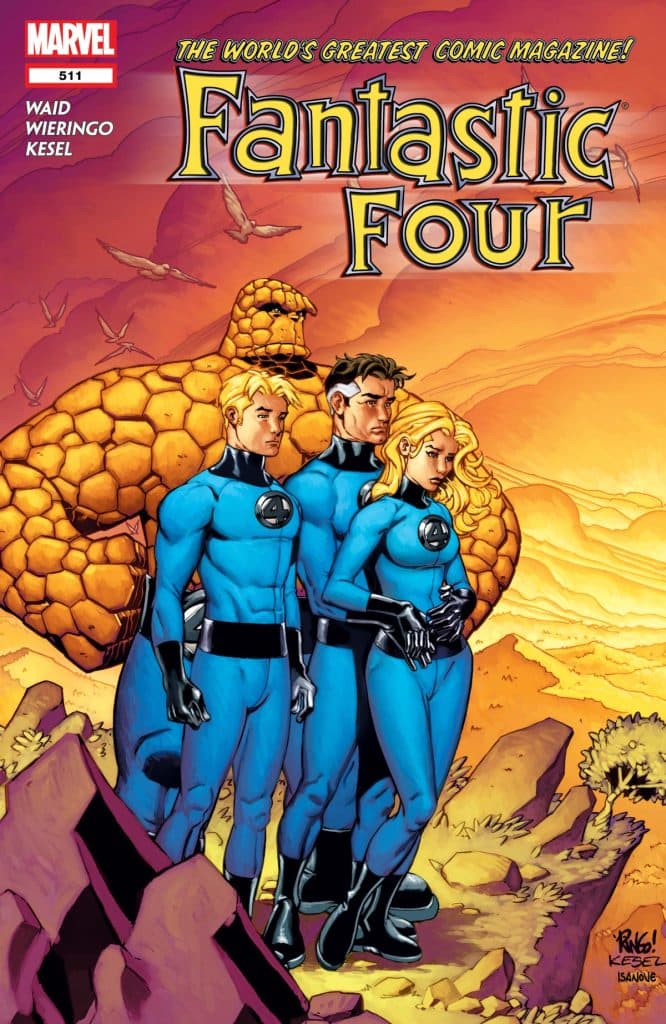 Marvel Comics
Marvel ComicsMark Waid and the late-great Mike Wieringo had one of the best modern Fantastic Four comics because they focused so much on the family aspect of the team. Their story Hereafter drives this home with the story of a dead family member and the lengths they’ll go through to save them.
Hereafter is the endgame of a long anniversary arc starting with Fantastic Four #66 (the volume was renumbered to #500 after issue #70). The Thing, possessed by the spirit of Doctor Doom, sacrifices himself to save the world. Refusing to live without him, Reed works for weeks to cheat death, culminating in the team going on their greatest adventure into the afterlife.
Ultimately, Hereafter turns into something of a cosmic reset, reviving The Thing and healing physical and emotional wounds the team suffered. But the story, demonstrating the strength of the first family’s unbreakable bond and featuring an unforgettable sequence where the team meets a version of God who looks suspiciously like Jack Kirby, has gone down as some of the best FF storytelling ever.
The Coming of Galactus
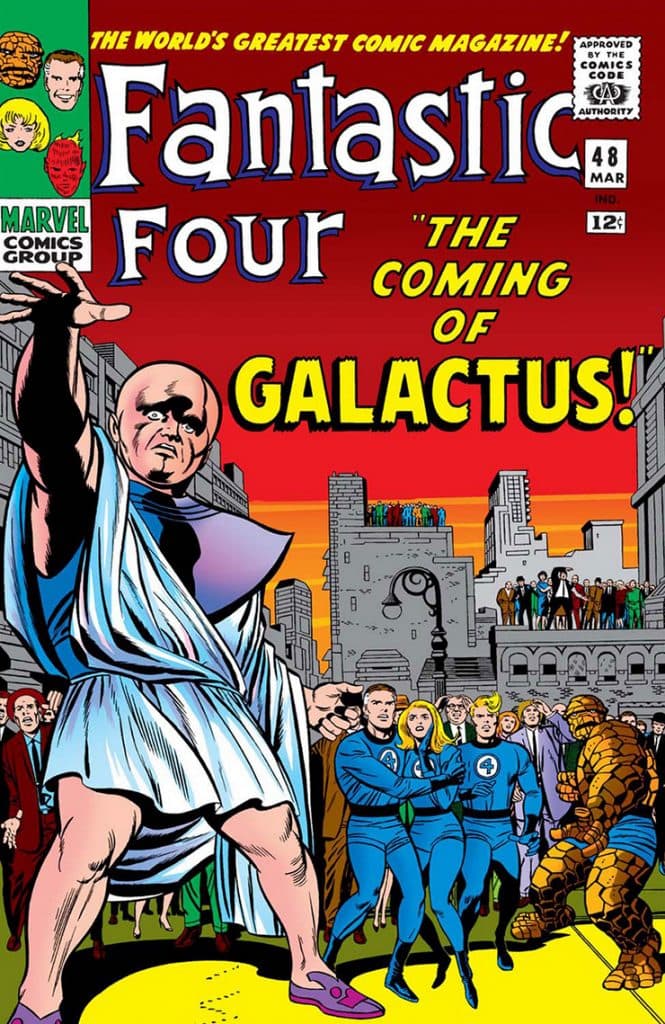 Marvel Comics
Marvel ComicsPerhaps no story in comics, let alone Fantastic Four comics, is more iconic than The Coming of Galactus.
This story, which formed the first part of what would come to be known as The Galactus Trilogy, saw the debut of not only the World Eater but also his iconic herald, The Silver Surfer. The Watcher, who has been solemnly watching events unfold for years, breaks his oath to warn Reed Richards of a grand threat.
Originally released five years into the publication history of Fantastic Four, this is the first truly cosmic story. The arrival of Galactus and the Fantastic Four’s efforts to stop him not only set the stage for an all-time classic but forever changed the course of FF comics. Had it not been for this story, the many grand adventures of cosmic travelers likely never would have come to pass.
This Man…This Monster!
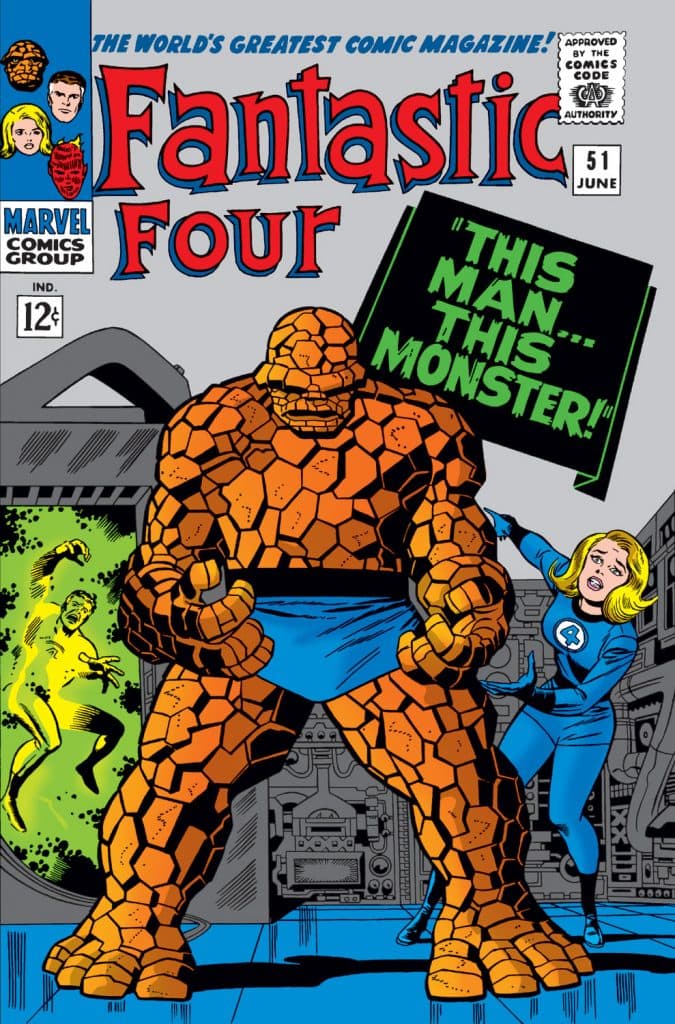 Marvel Comics
Marvel ComicsIf you’ve ever seen any Fantastic Four art, you’ve almost certainly seen the opening page of this story. Rejected by his girlfriend, Alicia Masters, and facing the prospect of never being human again, a depressed Ben Grimm stands alone in the rain.
Thus begins This Man…This Monster!, a tale that almost cruelly gives Ben Grimm the one thing he’s always wanted, but in such a way that his morals won’t let him take it. Scientist Ricardo Jones, hoping to get the fame and fortune he believes he deserves rather than Reed, steals Ben’s powers and turns himself into the Thing.
The now-human Ben goes on a mission to prove he’s the real deal, but the crux of the story focuses on Ricardo and his realization that he was wrong about Reed being a glory hound. The story becomes one of the more heartfelt of the era, and its treatment of Ben Grimm sets the standard for decades to come.
Mr. And Mrs. Grimm
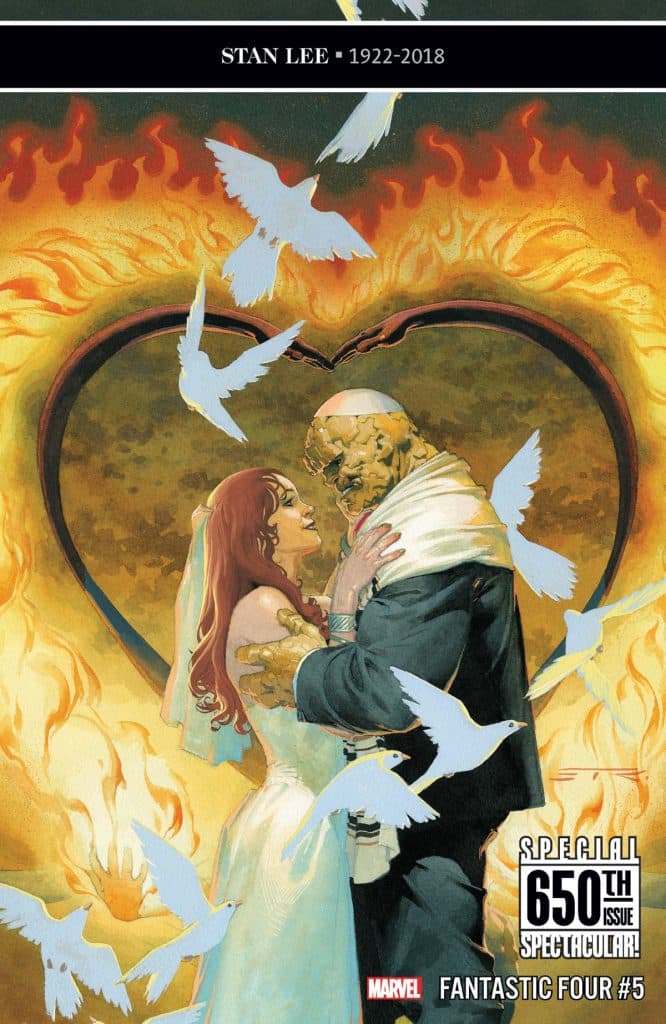 Marvel Comics
Marvel ComicsSuperhero weddings are a lot like wrestling weddings. They happen all the time, but they never go off without a hitch. The Fantastic Fours is similar, with The Thing finally getting engaged to longtime girlfriend Alicia Masters and the inevitable Doctor Doom interruption.
The wedding is the culmination of a few years of storytelling. Reed and Sue have been missing for years, remaking the multiverse in the wake of Secret Wars. This story feels like a fun, lighthearted reunion with the family finally together for the first time in forever. Ben’s imminent wedding reaffirms the relationships and drives home that the FF are a family first.
The run was the first major work acclaimed Spider-Man writer Dan Slott had done with the FF, and it shows how much he truly loves the characters. From Sue teaching Ben how to dance to the incredible 11th-hour reveal of Reed’s latest invention, the FF’s biggest wedding is a great primer for new readers.
The Trial of Reed Richards
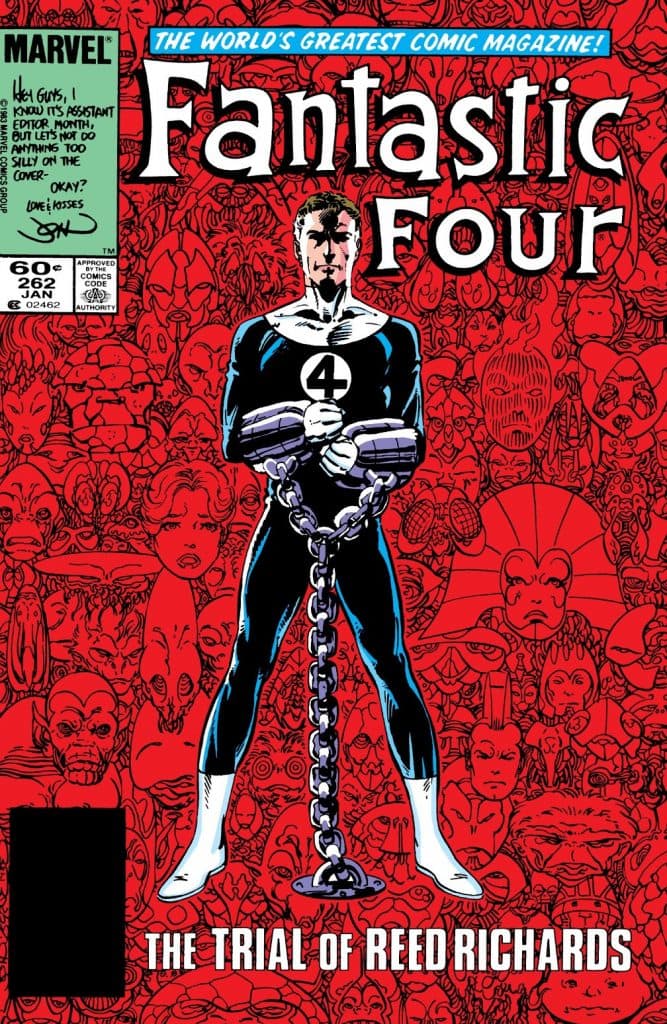 Marvel Comics
Marvel ComicsBen Grimm, Sue Richards, and Johnny Storm discover Reed Richards is missing. With help from The Watcher, they learn Reed is held prisoner and scheduled for execution after he helped Galactus destroy the Skrull homeworld.
Though The Watcher argues for Reed’s freedom, Majestrix Shi’ar Lilandra condemns Reed to trial as he refused her earlier warnings not to interfere with Galactus. Thus the stage is set for Fantastic Four #262, an all-time classic where Reed – and the very concept of Galactus, Devourer of Worlds – are put on trial.
There’s a lot going on in this story, told at least partially from the viewpoint of a self-insert of Marvel writer, John Byrne. A host of huge guest stars appear as Reed’s dedication to logic and faith is put to the test. Even more importantly, though, The Trial of Reed Richards establishes Galactus for the modern era, making the character a terrifying entity and cementing his role as a cosmic necessity.
Whatever Happened to the Fantastic Four?
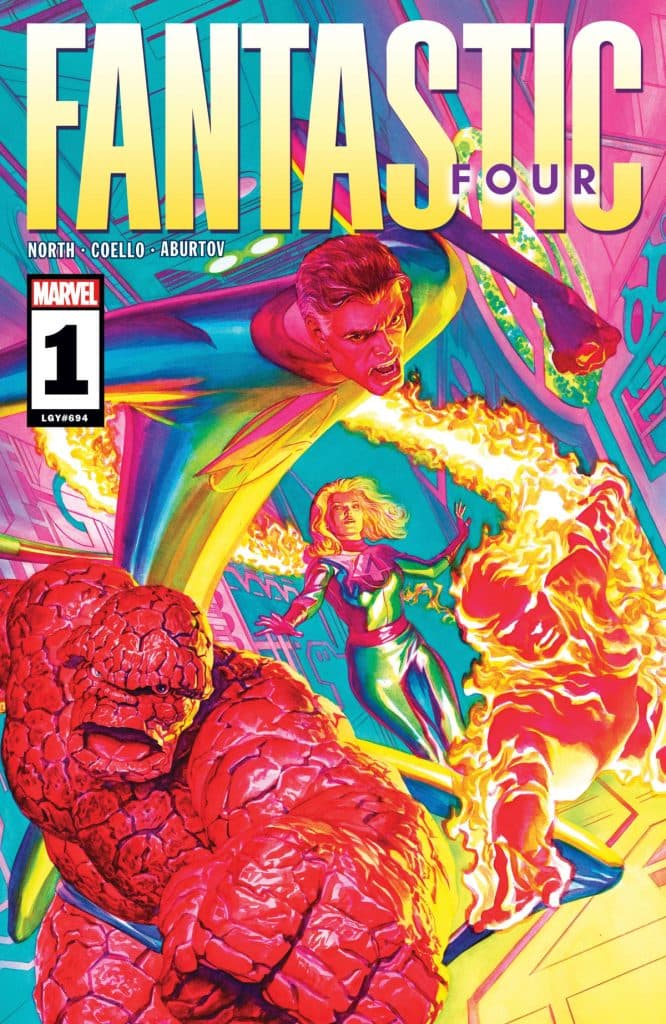 Marvel Comics
Marvel ComicsHow do you start a new Fantastic Four volume? Obviously, you split them up. Ryan North and Iban Coello’s Fantastic Four run kicks off with the team scattered across the country, having not spoken for months.
Though the family has been fractured by a great tragedy, it doesn’t take long to get the FF back in place. Out of their element in the countryside, the volume so far has worked to re-establish why the team’s family dynamic is so important.
The first six issues are collected as Whatever Happened to the Fantastic Four?, but honestly, this run to date is a perfect jumping on point. There’s big action like The Thing stuck in a town with a perpetual time loop and the awesome sight of a dinosaur-themed Avengers & FF, but the book also does some heavy lifting, like pushing the Invisible Woman to new limits when she uses her forcefields to blot out the sun.
If you click on a product link on this page, we may earn a small affiliate commission.
